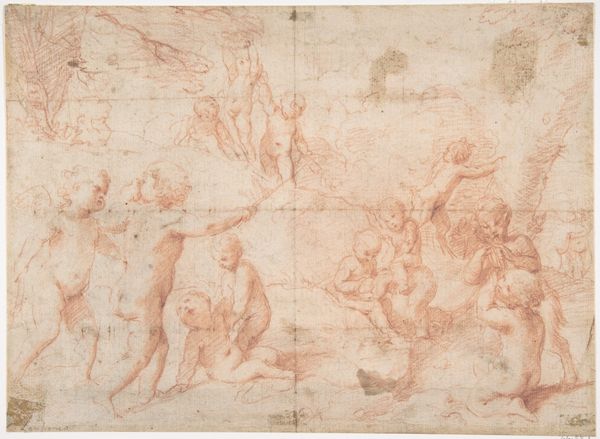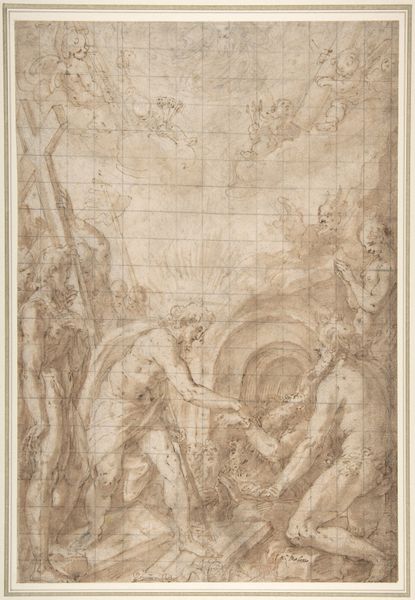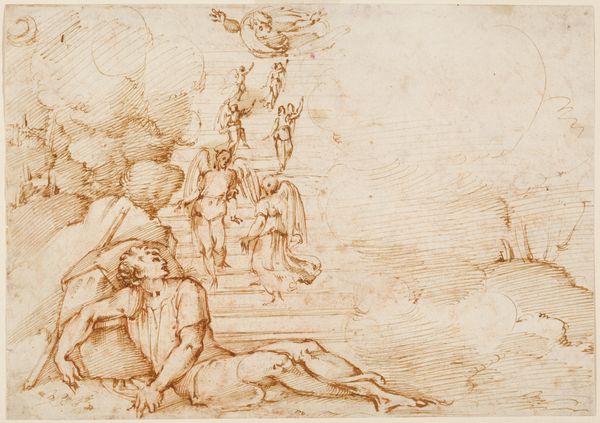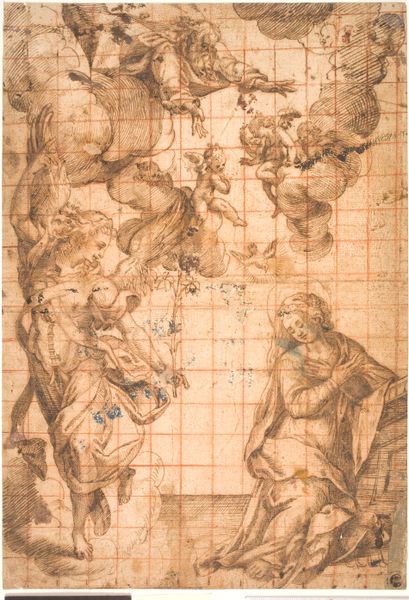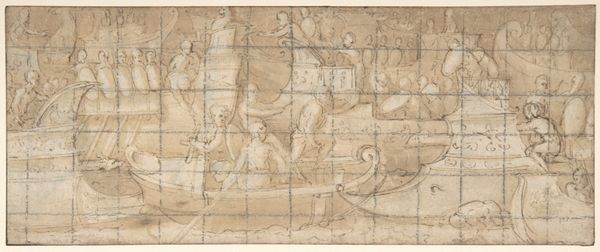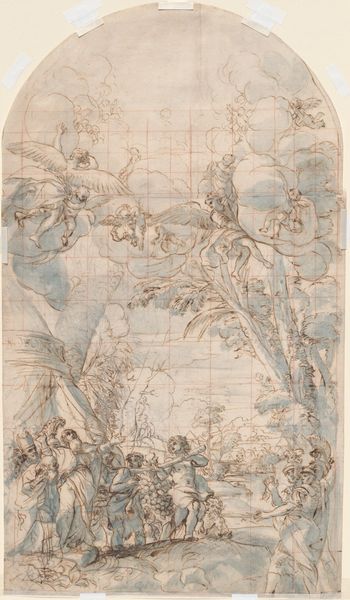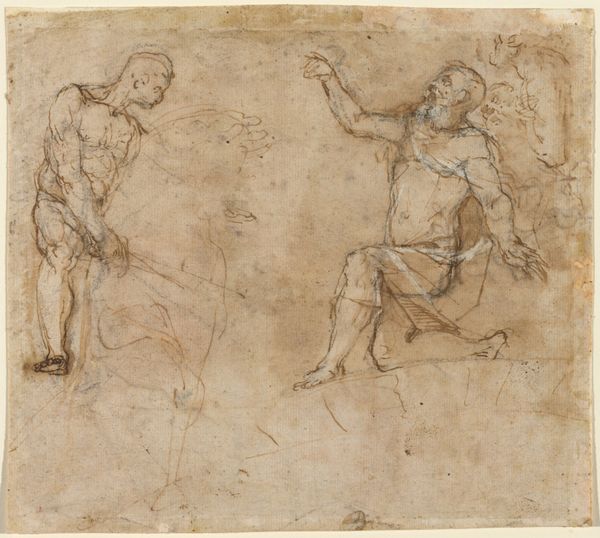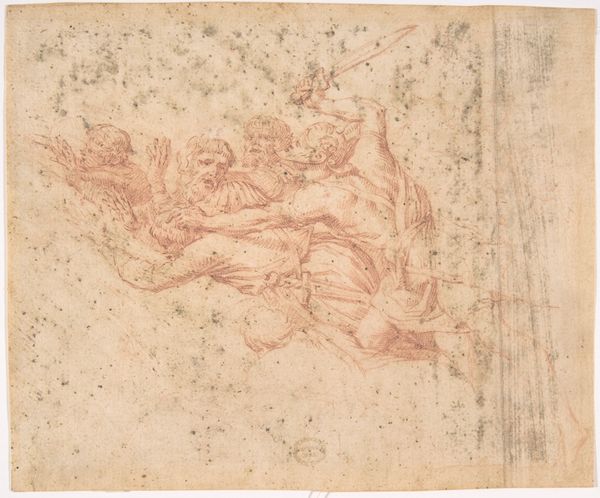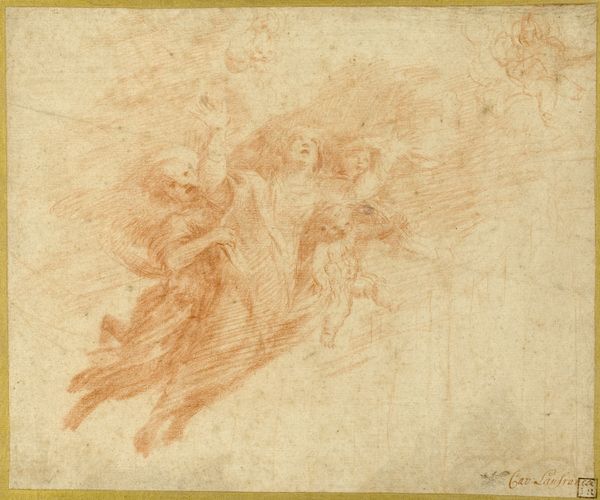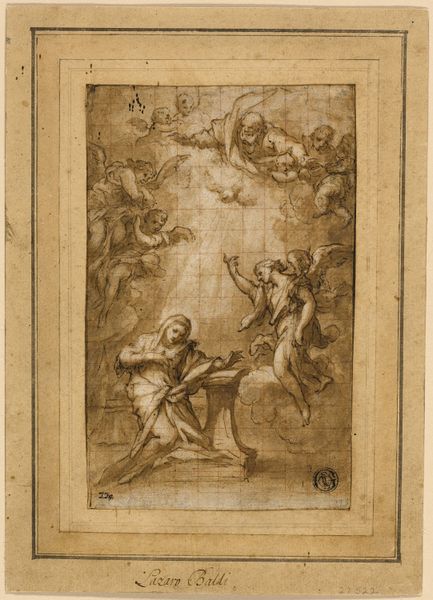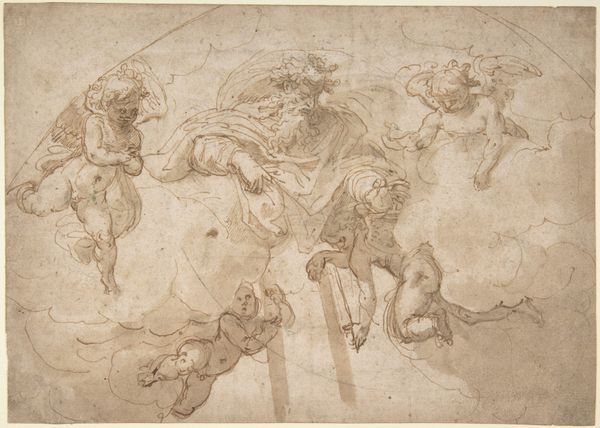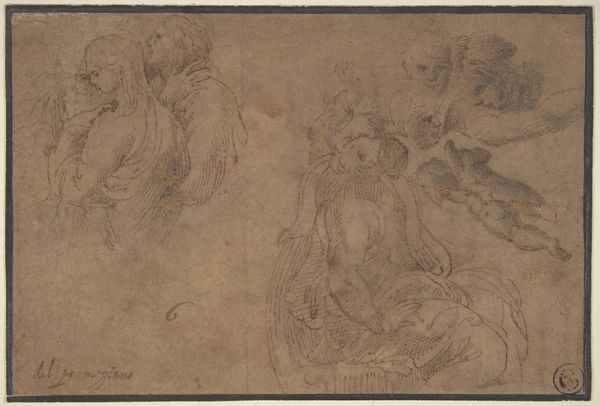
drawing, ink
#
portrait
#
drawing
#
high-renaissance
#
toned paper
#
narrative-art
#
figuration
#
ink
#
history-painting
Copyright: Public Domain
This drawing, now in the Städel Museum, was made by Raphael in the early 16th century. It depicts God showing the rainbow to Noah, a sign of their covenant after the Great Flood. Raphael was working at a time when the Church was a major patron of the arts. His work, while beautiful, also served a political function, reinforcing religious authority. The image operates through visual codes familiar to its time. God is presented as powerful and commanding, while Noah and his family are shown in postures of reverence. This was a hierarchical society, and these images helped to reinforce those social roles. The regular grid Raphael used suggests it was a study for a fresco or tapestry. To understand this work fully, we need to consider the socio-political context of Renaissance Italy, the role of the Church as a patron, and how artists like Raphael were influenced by, and in turn, influenced the visual culture of their time. We can research the history of the Catholic Church as an institution, to better grasp the context of this work. By analyzing the historical context, we can better understand how art reflects and shapes our understanding of society.
Comments
No comments
Be the first to comment and join the conversation on the ultimate creative platform.

